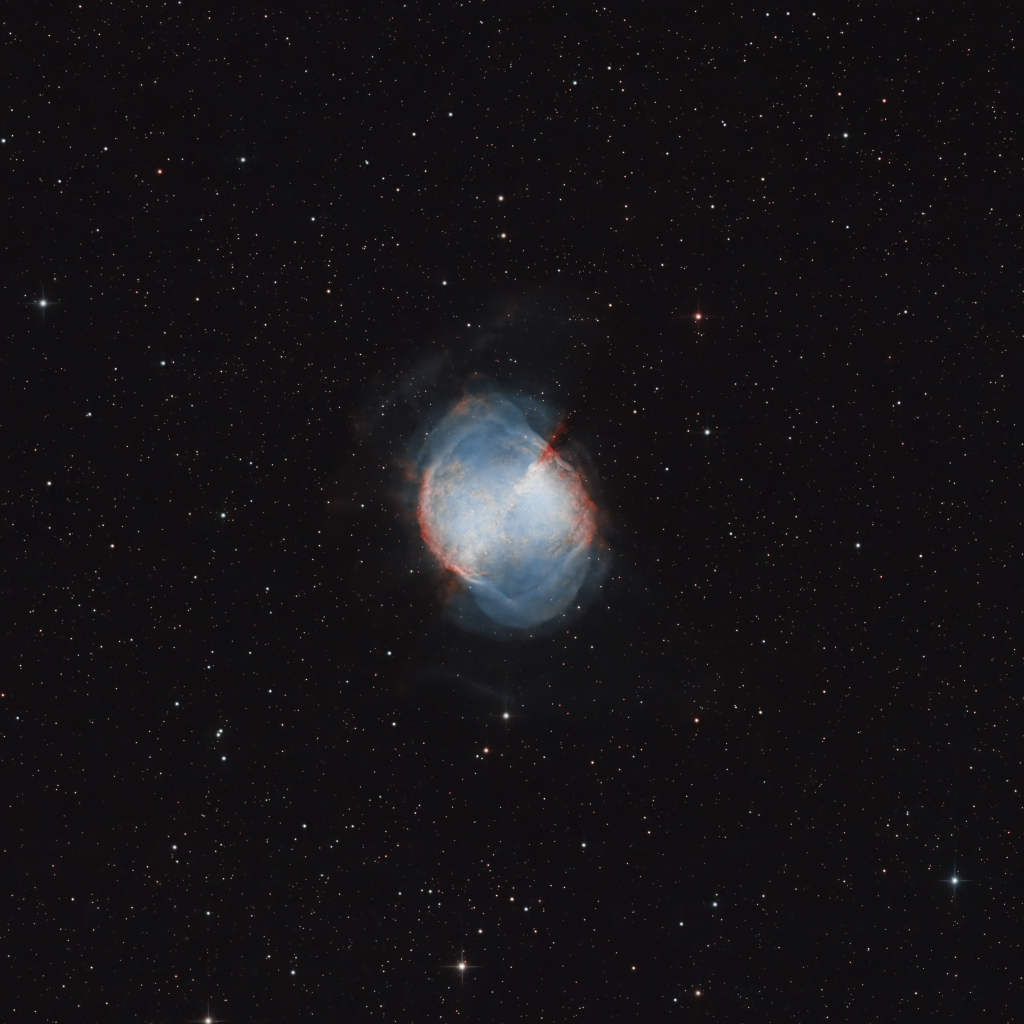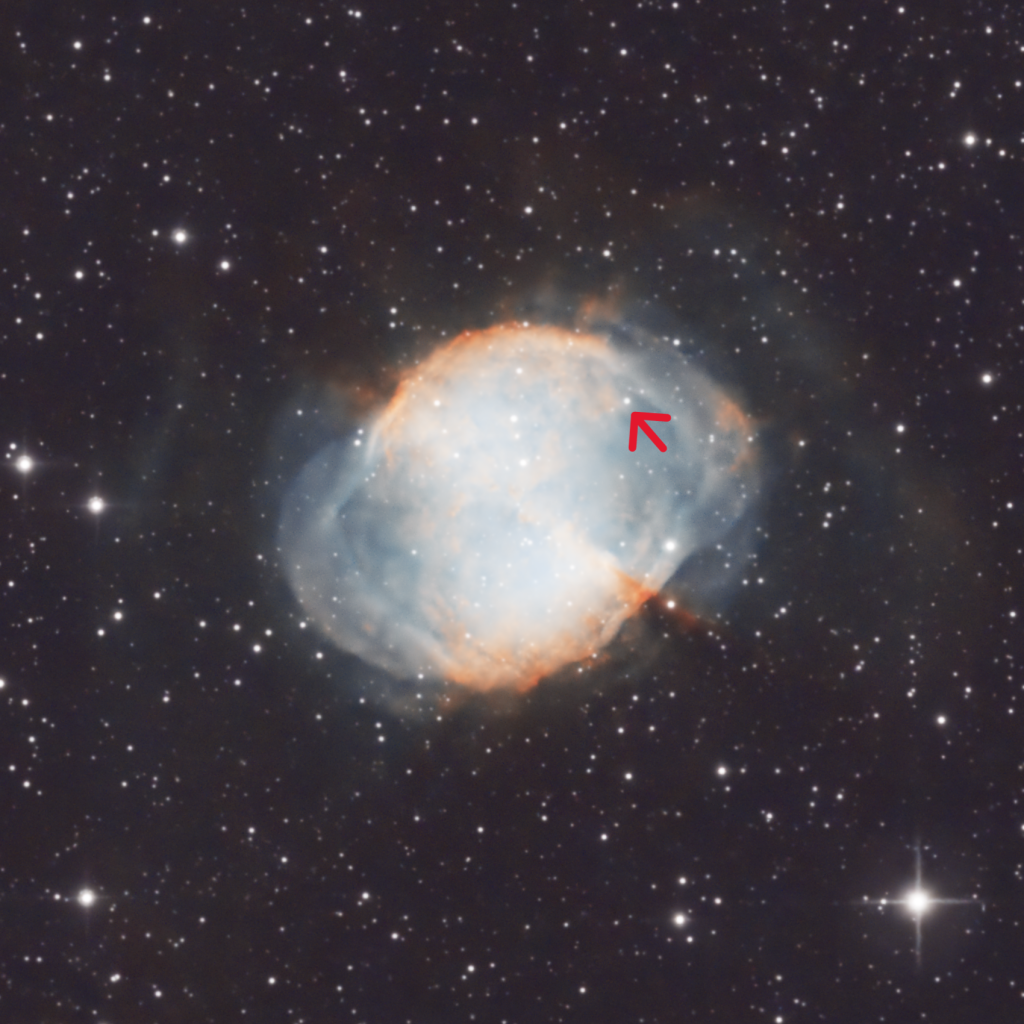The Goldilocks Variable
M27 or the dumbbell nebula takes many of us back to our first time using a telescope. This dying star shedding off its layers is one of the brightest deep space objects one can observe and one of the easier targets to spot during the summer months.
I have fond memories of the hot summer nights spent with my 8 inch telescope searching for this object and getting lost in the nearby constellations Sagitta and Vulpecula. This is such a rich part of the sky where it’s easy to get lost and stumble on other objects like open clusters or colorful stars.
This summer I used M27 to check my guiding, focus and test some quick things before I move on to the main target. This image is the result of all these brief test sessions put together.

I also added another hour of data shot with my IR 850 filter. This filter blocks ultraviolet and visible light but lets through the infrared. It’s mostly suited for planetary work but also works on stars.
The bright star in the second image with the red arrow is the so called “Goldilocks Variable”. This is a Mira type variable that outshines the nearby stars at its peak but is not visible in duoband or even with a normal broadband filter in its normal state. Next (observable) peak is expected in July 2026. Last observable peak was in July 2019 – if you’ve shot the dumbbell in that time it will be visible, otherwise not. With the IR filter these stars pop instantly.
Mira stars are pulsating variables in the red giant phase, like our sun in the future. What is cool is that theoretically we could have a new planetary nebula at some point inside M27, that is if it’s still around then.
